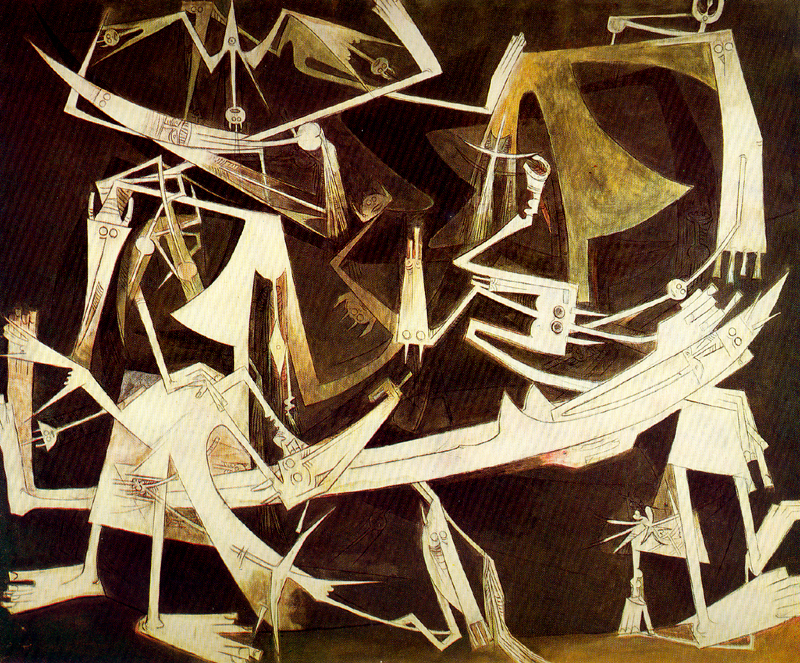Source: The National Museum of Cuba. Havana: Letras Cubanas, 1978, fig. 116.
Image: Wifredo Lam, "The Third World" (1965, oil on canvas). This painting is in the Museo Nacional de Bellas Artes de La Habana.
Comments: This painting is by perhaps the greatest Cuban painter from the middle of the twentieth century, Wifredo Lam (1902-1982). His birth name was Wifredo Oscar de la Concepción Lam y Castilla. Lam's father was a Chinese immigrant to Cuba, and his mother was the daughter of a former Congolese slave and a Cuban mulatto. His grandmother was a Santería (African culture) priestess. Hence, Wifredo Lam was thoroughly acculturated to Afro-Cuban humanities and culture. Like his heritage, his art is known for his hybrid (syncretic) style and content. He studied law in Havana from 1918 to 1923, after which he went to Madrid, Spain, where he discovered the full scope of European art. In 1929 he married Eva Piriz. In the 1930s he came in contact with Surrealism. During the Spanish Civil War (1936-1939) he worked on the side of the democratic Republic. In 1938, he joined Picasso in Paris. In 1941, he accompanied the famous French anthrolopogist Claude Levi-Strauss to the Caribbean island of Martinique. After being jailed and released, he moved back to Cuba, where he returned to his Afro-Cuban roots. During his Cuban period he fused Surrealist and Cubist techniques with Cuban imagery. In 1943, he painted his most famous work. (For a view of Wifredo Lam's most famous painting, see: => Lam #2.) In 1946, he travelled to Haiti, where he broadened his familiarity with Afro-Latin American culture and art. From 1952 onward his principal residence was in Paris, but in 1966 he painted "The Third World" for Fidel Castro's presidential palace in Havana. During his lifetime, Lam had more than one hundred solo exhibitions of his works. For a major Hispanist's brief statement about Lam, see: => Schraibman.

